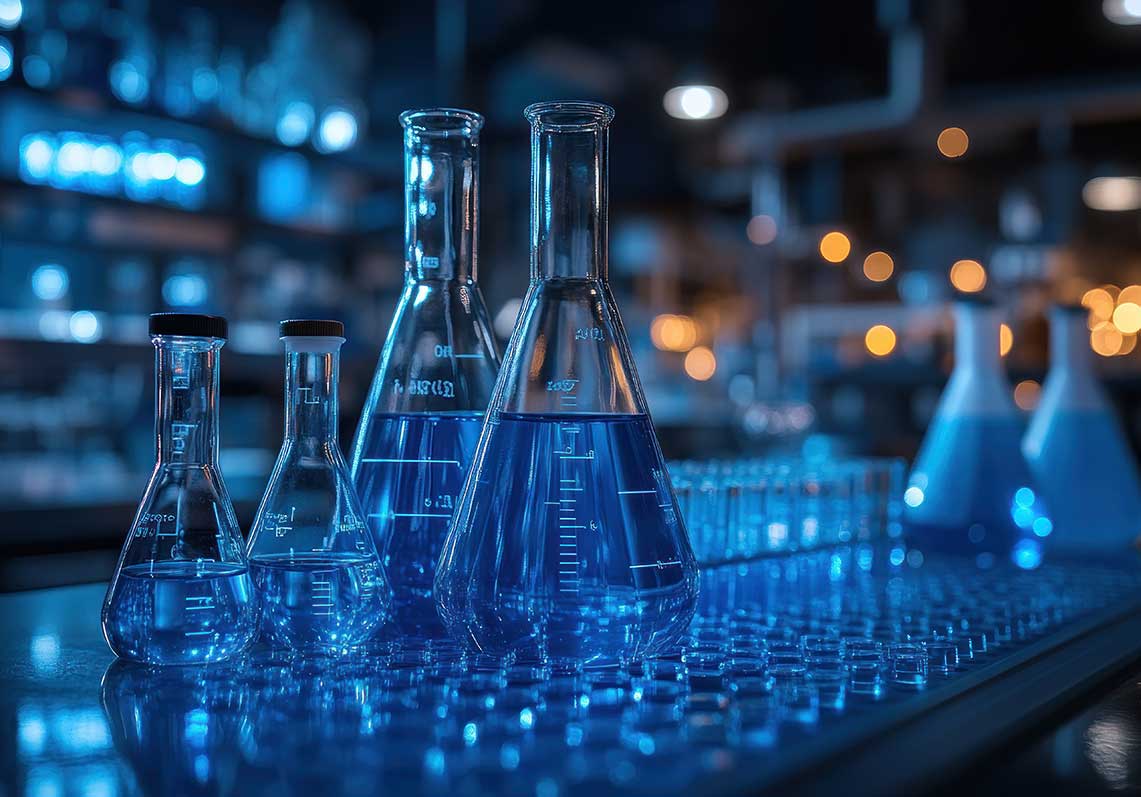Chemical analogs exist in a legal grey zone. These chemicals are very similar to existing illegal compounds, but their chemical structure is often different enough to avoid being labeled with the same status. Also known as research chemicals, they are typically labeled as being “not for human consumption” and designed purely for research purposes, but inevitably, they find their way onto the market.
Popular with microdosers and experimenters, these substances can provide people with a legal way to explore psychedelics. As a psychedelic practitioner, it’s important to know what these substances are, how they work, and what risks you need to be aware of.
The Most Common Legal Alternatives to Traditional Psychedelics
New research chemicals are being produced all of the time, but this means they are attracting more attention, specifically from lawmakers. You can learn about some of the most popular analogs below, but remember, these may be illegal in your jurisdiction and you should never assume otherwise.
1P-LSD
1-propionyl-lysergic acid diethylamide, known as 1P-LSD, is an LSD derivative that first appeared in 2015 and was sold as a “designer drug”. (1)
Tests have shown that 1P-LSD remains detectable for just over 4 hours in blood and under 3 hours in urine, yet LSD is detectable for up to 80 hours thereafter, suggesting this analog compound mostly converts to LSD after ingestion. (2)
Very little research exists on this compound and its effects, but it’s thought to have similar effects to LSD. User experience reports confirm this to be true, with one Erowid user calling it “lysergic’s identical twin”. (3)
2C-B
Developed by Alexander Shulgin, 4-bromo-2,5-dimethoxyphenethylamine (2C-B) comes from the phenethylamine class and is chemically similar to mescaline. It was developed and widely used in the 1970s, with many seeing it as a milder alternative to traditional psychedelics. (4) (5)
2C-B was added to Schedule II of the Convention of Psychotropic Substances in 2001, so it is now prohibited in most countries. (6)
LSZ
As with 1P-LSD, lysergic acid 2,4-dimethylazetidide is an analog of LSD. Known as LSZ, it was developed by David E. Nichols, who contributed to the synthesis of many other analogs. It gained some popularity in the 2010s and was attributed to a rise in the designer drug market in countries like the UK, but it was soon banned and is now illegal in many jurisdictions.
4-AcO-DMT
In 2024, the FDA investigated a brand of “shroom” chocolate bars that had made numerous people sick. They found that these bars contained 4-acetoxy-N,N-dimethyltryptamine (4-AcO-DMT), which doesn’t occur naturally in psilocybin mushrooms. (7) (8)
The edibles were recalled, but it drew public attention to 4-acO-DMT. It works by converting to psilocin in the body, thus producing similar effects to psilocybin. However, unlike magic mushrooms, which have been used by humans for centuries or longer, the compound is relatively new, and there is very little research on its efficacy or safety.
ALD-52
Another derivative of LSD, 1-Acetyl-N,N-diethyl lysergamide (ALD-52), was synthesized by Albert Hofmann, who was also the first to synthesize LSD. Although it was initially synthesized in the late 1950s, it has not been widely researched or studied and is very rare. (9)
Other Common Psychedelic Research Chemicals
- ETH-LAD (6-ethyl-6-nor-lysergic acid diethylamide): An analog of LSD that is said to produce similar effects, albeit with greater potency.
- PRO-LAD (6-propyl-6-nor-lysergic acid diethylamide): An analog of LSD with less potency.
- AL-LAD (6-allyl-6-nor-LSD): A rarely used LSD analog that produces similar effects with a shorter duration.
- 4-HO-MiPT (4-hydroxy-N-methyl-N-isopropyltryptamine): A tryptamine with effects similar to classic psychedelics like psilocybin and LSD.
Legal Status of Psychedelic Analogs
While many countries treat analogs as different substances, each with its own specific laws, that’s not the case in the USA. The Federal Analog Act (21 U.S. Code § 813), first passed in 1987, states that an analog of a controlled substance will also be controlled. For instance, this means that 1P-LSD has the same legal status as LSD. (10)
There are similar laws in other major countries, although the novel nature of these substances means many of them slip through the net.
In Italy, a decree from 2021 added many research chemicals to the list of banned substances, including 1P-LSD and DPT, and similar laws have been passed in France, Sweden, Italy, the United Kingdom, and various other jurisdictions. (11) (12) (13) (14)
The laws can differ greatly by substance and region, so you should always check your local laws before buying any analogs.
How Do Legal Analogs Compare to Traditional Psychedelics?
Analogs are not simply a legal version of popular psychedelics. In many cases, as noted above, they’re not even legal, especially here in the United States.
There are some very clear differences between these substances and traditional psychedelic medicines like psilocybin, mescaline, and LSD.
Firstly, we can’t be sure if they are safe for consumption or not. There are few studies supporting their use, and nothing to confirm that they are safe in the long term.
As a psychedelic practitioner, you owe it to your clients to keep them informed and safe, and that’s not easy to do when you’re dealing with a substance that you know little about.
Secondly, the effects are not necessarily the same as the compounds on which they are based.
In a 2017 analysis, researchers studied various individuals who had consumed LSD analogs and LSD and then compared the two. They found that LSD analogs were weaker in strength and offered a less pleasurable high and a more unpleasant comedown. (15)
Why Do Legal Psychedelic Analogs Exist?
If they don’t serve a clear legal purpose, haven’t undergone extensive testing, and aren’t guaranteed to be safe, why do research analogs even exist?
It’s partially to feed the need for psychedelic exploration and to offer more chemicals to a marketplace that seemingly can’t get enough of them right now. But let’s be honest—the real reason they exist is to circumvent strict psychedelic laws and give consumers legal alternatives to controlled substances.
As is often the case, prohibition has fueled a need for alternatives, and as those alternatives can’t be tested or understood to the same degree as primary compounds, they end up posing greater risks and could be a greater threat to human health.
There are generations of clinical trials for psilocybin and countless studies into the effects and safety of LSD. We know how these substances work, what effects they provide, and how to use them safely.
The same can’t be said for the analogs that copy their chemical structures and aim to provide the same effects—they’re novel, they’re unknown, and they’re far too recent to understand the long-term effects.





